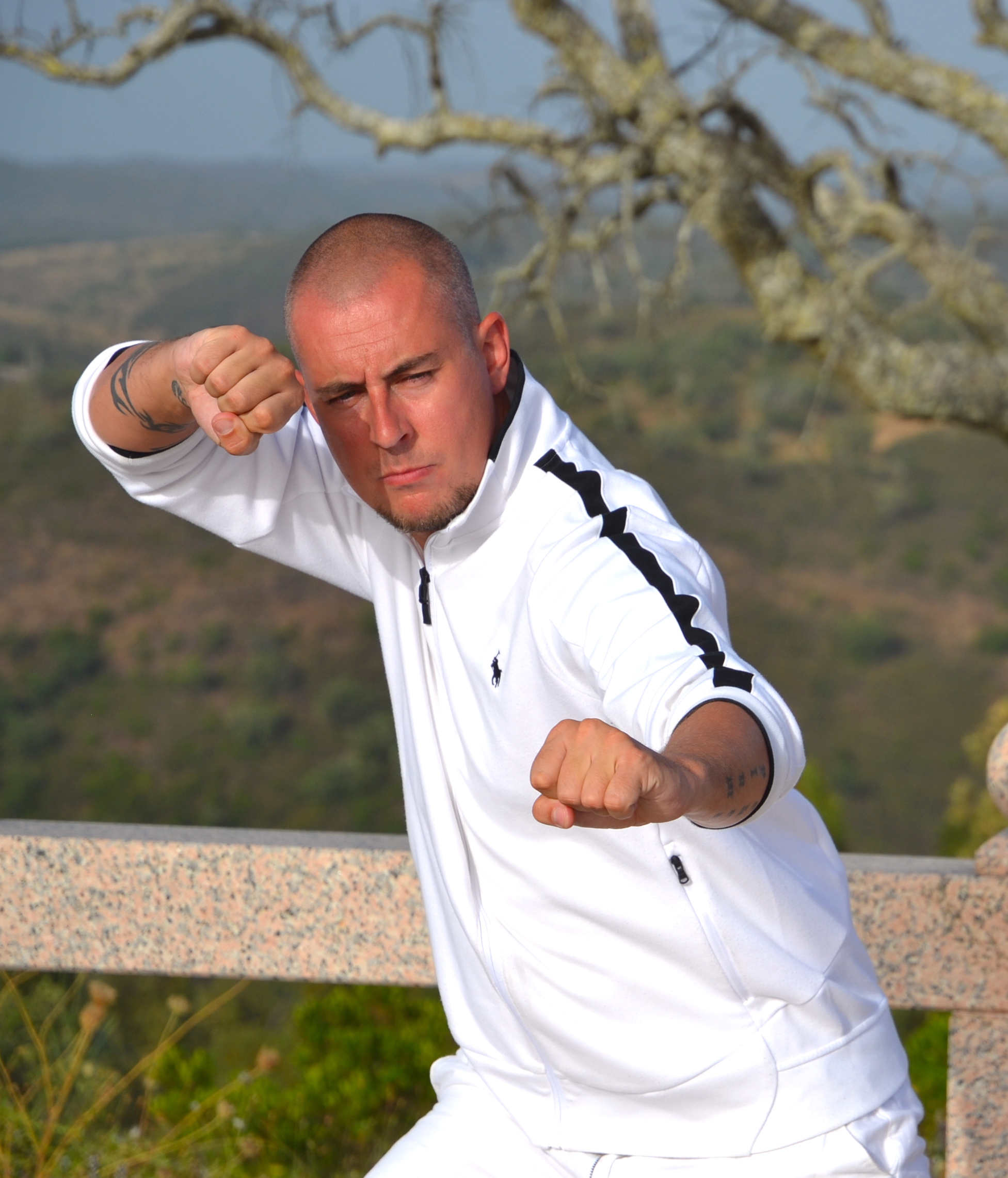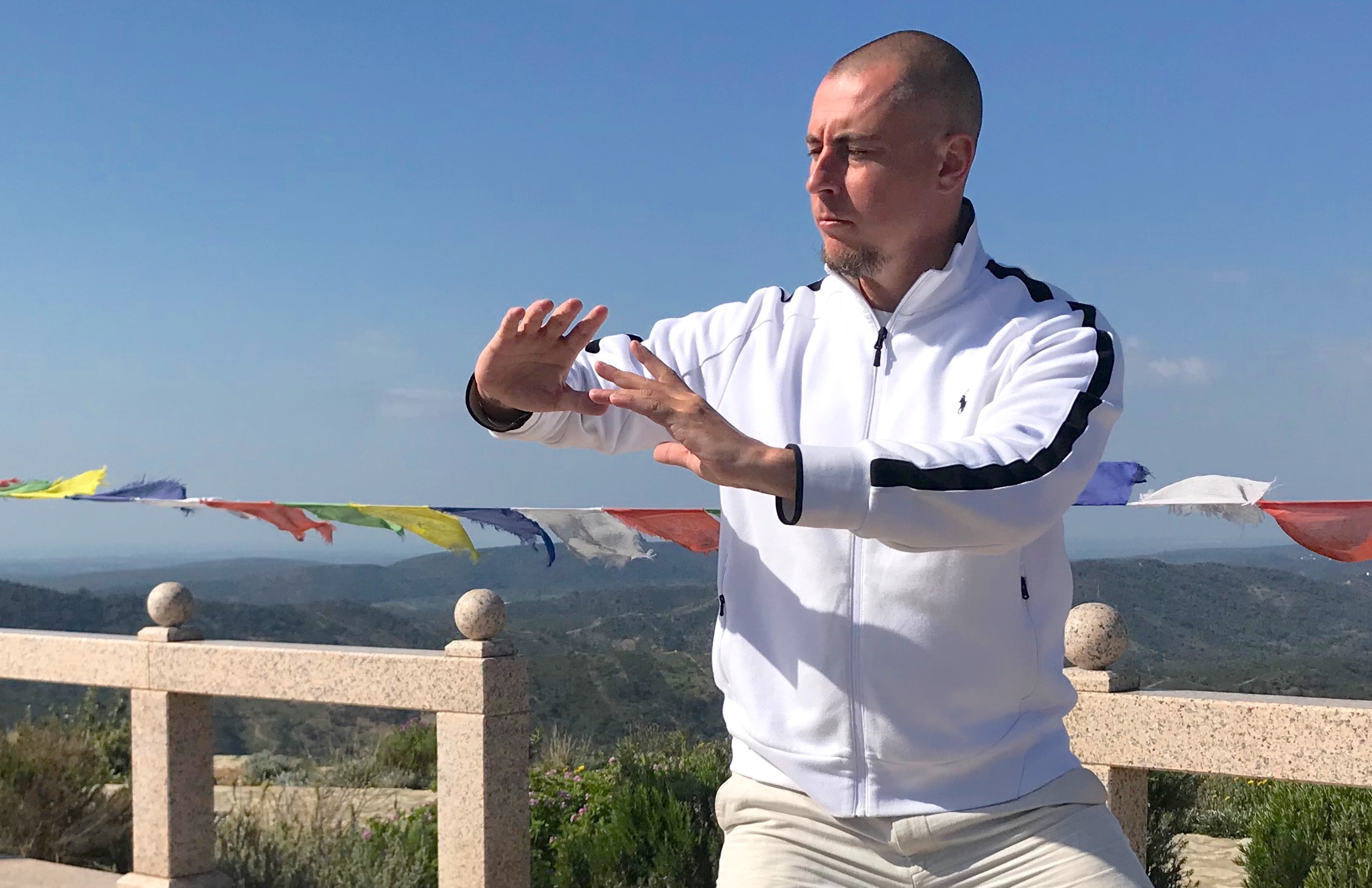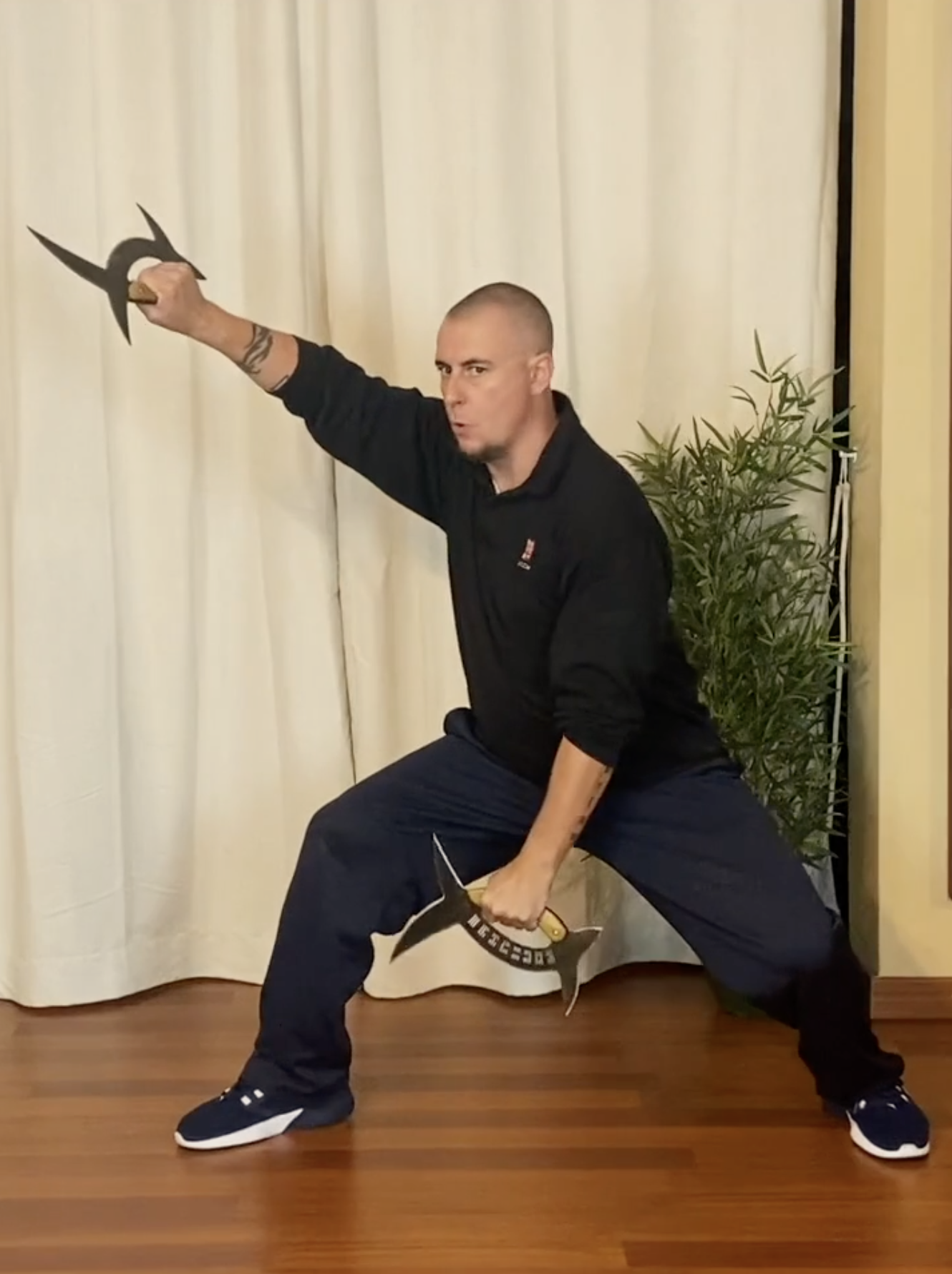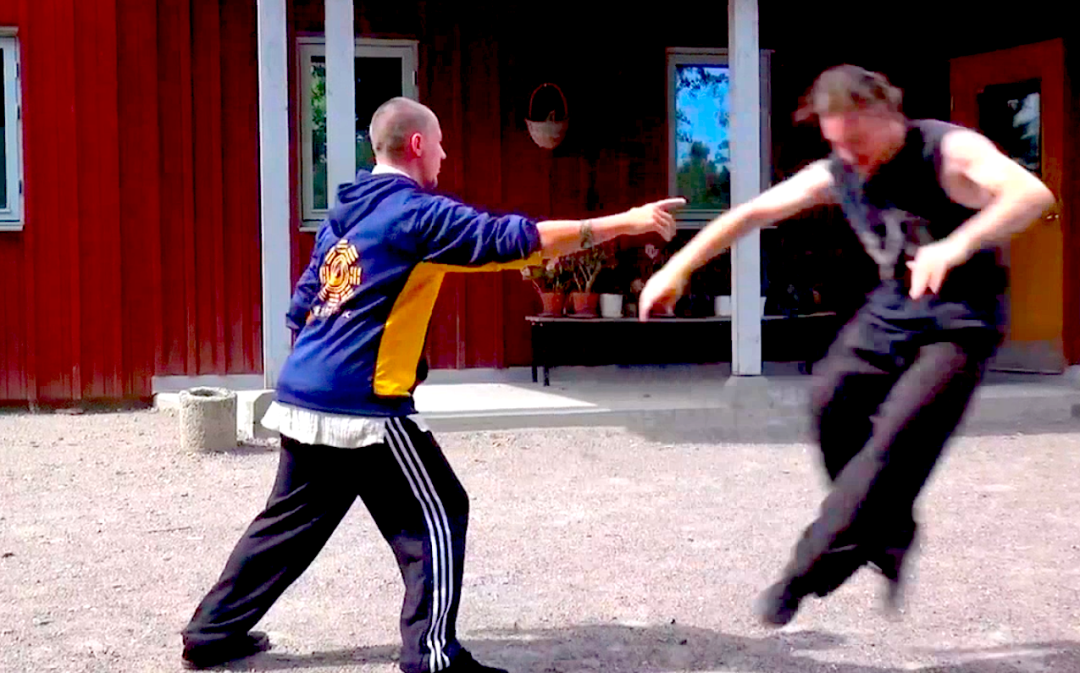Inner Gong Fu
“The arts of Taijiquan, Baguazhang and Xingyiquan as a method of Daoist cultivation”
The Beauty of TaiJi Quan
If we were to select two key qualities that traditional Taijiquan excelled at teaching, it would be release (Yin) and conscious absorption (Yang). When these two qualities are applied in the correct manner, mobilisation of the inner force (Jin) is achieved. In this way, Taijiquan uses a combination of bodily development, mental training and internal mechanics to teach the inter-play of Yin and Yang, the great philosophical tenet of Daoism.
Taijiquan is based upon the study of 37 key postures or ‘Shi’ which each mobilise the body’s Qi in a particular fashion. Originally a combination of Nei Gong, Gong Fu principles and alchemical methods, these postures were gradually linked together into a flowing sequence that most would recognise as the ‘Taiji form’ these days. It is understood that the postures are the root of understanding Yin and Yang within the body whilst the movement from posture to posture is based upon the theory of the Wu Xing or ‘five phases.’ It is these underlying philosophical concepts which link Taijiquan practice to the Daoist tradition though its actual origins are shrouded in myth.
The key to effective Taijiquan training is to understand how to transform the body and its function according to Taiji’s teachings. The entire of the body’s functioning must be retrained so that it is the ‘inner-engine’ that mobilises the body rather than the contractive muscles of the body.
This is achieved by understanding how to establish the correct combination of ‘releases and pulls’ within the body and then sinking the Qi until a certain degree of ‘fullness’ arises. Rather than being an art based solely upon ‘technique’, Taijiquan trains key ‘inner qualities’ known as ‘Song’ and ‘Ting’ which lead to the mobilisation of Qi and Jin. Despite Taijiquan’s widespread practice globally, these are teachings often lacking from an art that has suffered terribly from being watered down to a point of losing much of its great potential.
TaiJi as Moving Meditation
One of the most famous aspects of Taijiquan is that it is a form of ‘moving meditation’. Though this claim may seem strange to many, those who move deep into the style may come to understand how this is the case. Both alchemical meditative principles derived from Daoism and absorption methods derived from Chan Buddhism are incorporated into and necessary for mastery of Taijiquan. Through consistent training, a student of Taijiquan may learn how to stabilise their awareness within the moving form of the body and to understand the nature of conscious release via the vehicle of the body. Within Chinese culture they have long understood that the root of many internal diseases is the quality of a person’s mind; though it is true that the bodywork of Taijiquan is greatly beneficial to a person’s health, the greatest changes to a person’s overall well-being can be found through evolution of their mental state.
Modern Taijiquan
In the past, Taijiquan was used for fighting and many members of the ‘Taiji family’s’ such as the Yang family were famed for their combative abilities. In this day and age, the need for hand-to-hand combat skills in order to defend your life are diminished with many of us never having an actual physical confrontation at any point in our lives. For this reason, Taijiquan has largely evolved into an art for self-development, health and healing. At Lotus Nei Gong, we teach partner work and basic martial arts skills but our focus is upon helping people to understand and improve the nature of their body and mind. Combat takes a place of secondary importance to the chance to live a life of well-being and happiness.
The video to the right is of Damo performing Yang style Taijiquan and Pushing Hands practice.
This form and practice was filmed in the Algarve region of Portugal along with his senior students who were there to study with him. Yang style is the main system of Taijiquan taught within the Lotus Nei Gong School.
We teach a full syllabus of short, long and weaponry-based forms as well as partner work and Nei Gong.
The Rotating Forces of Bagua Zhang
The ancient Daoist understood that the universe operated in circle’s and spirals. As life grows and processes unfold, the rotating quality of Qi serves as the animating force. Once life is manifest, Qi then divides up into eight great movements known as the ‘Gua’. The combination of Gua and spiralling Qi generate the great flux upon which life is dependant. To the Daoists, understanding this process was vital to understanding existence. They developed many practices which would enable them to penetrate through the veil of these mysteries and one of these was the practice of circle walking.
Circle walking is a meditative practice that connects a practitioner’s mental energy to the circles and Gua of life. That which is manifest above is manifest below as the practice of ‘walking the circle’ enables an experiential understanding of this process to be developed. By walking in a specific manner, whilst changing the internal shapes of the body according to the qualities of the eight Gua, the process of life is matched and harnessed within the microcosm of the practitioner. Once mastered, this brings an awakening of the inner mechanisms of Qi as well as a way to harness the nature of change for health and spiritual well-being.
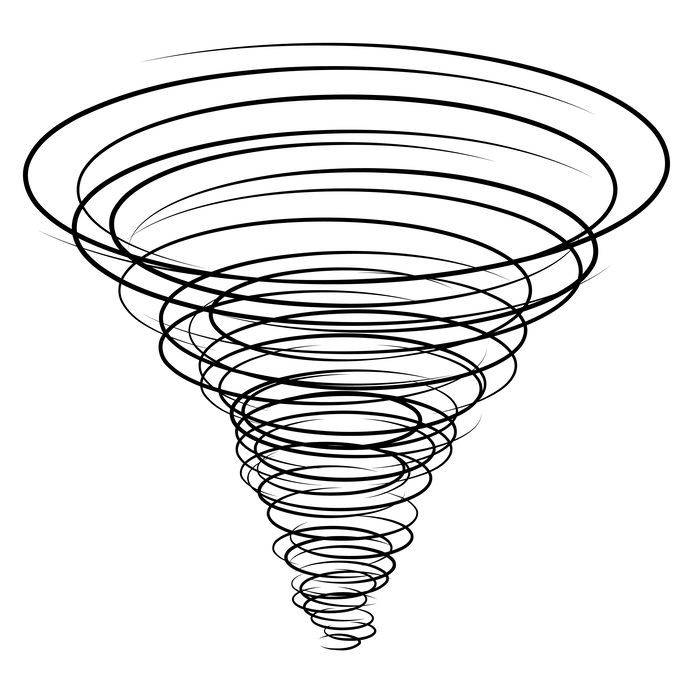
Pre-Heaven Bagua
This form of walking-meditation is known as ‘pre-Heaven Bagua’ and is actually a form of Nei Gong rather than a martial arts method. It is a way of opening the channels of the body and understanding Qi, Xin (mind) and Shen (spirit) in order to develop a high-level of vitality and consciousness development.
Students learn to walk the circle whilst studying a full Nei Gong process; this is a complete method in its own right whether it is used as a spiritual practice or as a foundation for the next stage of training which is the post-Heaven Baguazhang training.
Post-Heaven Bagua
Post-Heaven Baguazhang is the martial art method that was developed from and evolved out of the earlier circle walking Nei Gong system. Relatively modern, Baguazhang was first introduced to the public by master Dong Hai Chun who synthesised his own Gong Fu expertise with the circle walking he encountered in the region of China where he lived. The circular movements and spiralling forms of Baguazhang were taken from the movements of energy he mastered through circle walking meditation; once these were incorporated into his own boxing method, Baguazhang (eight-symbol-palm) was created. These methods were then passed on to further masters and each added their own flavour to create the various styles of Baguazhang commonly practiced today. Within Lotus Nei Gong, it is the Cheng method which we primarily teach though there are influences and supporting drills from other Baguazhang methods included as well.
Further Training
The mixture of spiritual cultivation and self-defence training is a hallmark of the Gong Fu methods of Asia but is arguably expressed to its highest level within Baguazhang practice. As well as the practices of circle walking Nei Gong and Baguazhang palm changes, students also study various partner drills aimed at teaching the development and mastery of internal forces. The enigmatic deer-horn knives are the final part of the training along with Bagua-specific alchemical training which touches upon the deeper meditative aspects of Bagua training.
It is the combination of Nei Gong methods, martial techniques and spiritual mechanics that make Baguazhang such a unique art form.
The Eight Key Palm Changes
Each of these methods utilises the conceptual teachings of the eight Gua to help understand the inter-relations of two people during combat.
- Single Changing Palm – (單換掌)
- Double Changing Palm – (雙換掌)
- Taking Advantage Palm – (順勢掌)
- Behind the Back Palm – (背身掌)
- Turning Body Palm – (轉身掌)
- Grinding Body Palm – (磨身掌)
- Overturning Body Palm – (翻身掌)
- Double Embracing Palm – (雙抱掌)

